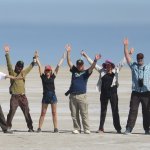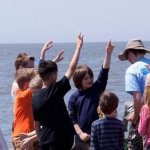We took a boat from the community of Guapinol and headed towards the Gulf of Fonseca, where Punta Condega, Honduras is located. With almost perfect synchronicity we arrived in the Gulf just as the tide was coming in and covering the mudflats and large flocks of shorebirds were flying to their roosting sites. Excitement took over the group and even the community guide told us: this is the perfect time to be here. As the flocks of thousands of birds passes in front of the boat, we thought that the flock would land on the small beach at Punta Condega, but when we arrived we realized that they did not stop there. They had continued flying towards their feeding site. According to the route the birds were taking, we suspected that they were feeding on the mudflats at the mouth of the Choluteca River.
We are doing the first sampling of shorebirds in natural and shrimp habitats as part of the project “Habitat conservation initiatives in the shorebird reserve Punta Condega-Jicarito System: safe sites for shorebirds in Honduras” of the Coastal Solutions fellow Onil Rodriguez. The group is made up of six people from organizations and groups that collaborate with the project: the Executive Office of the Western Hemisphere Shorebird Reserve Network (WHSRN) – Manomet, the Instituto de Conservación Forestal (ICF), Aves Honduras, shrimp companies, fishermen, and the Committee for the Defense and Development of the Flora and Fauna of the Gulf of Fonseca.
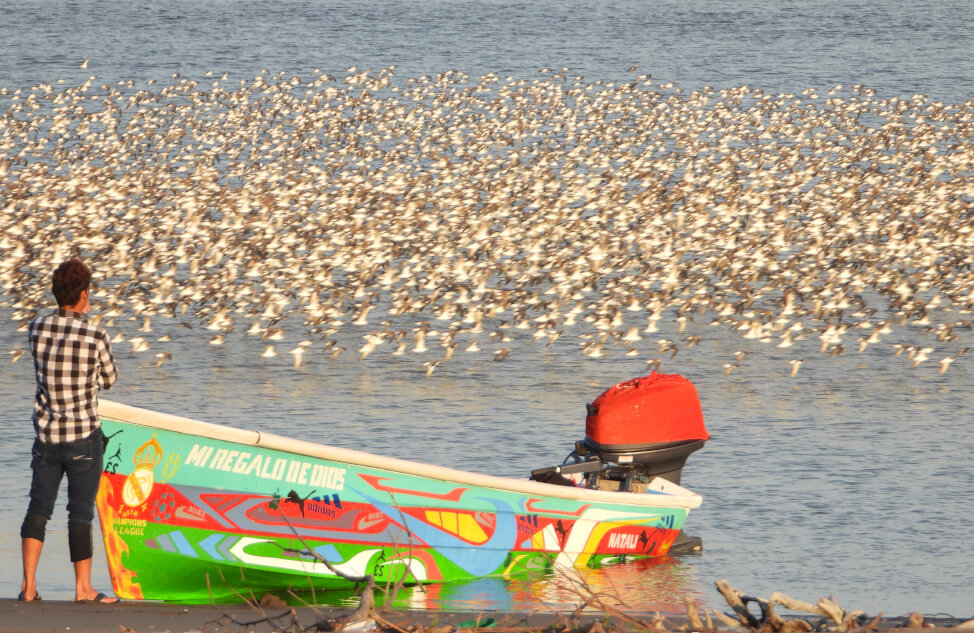
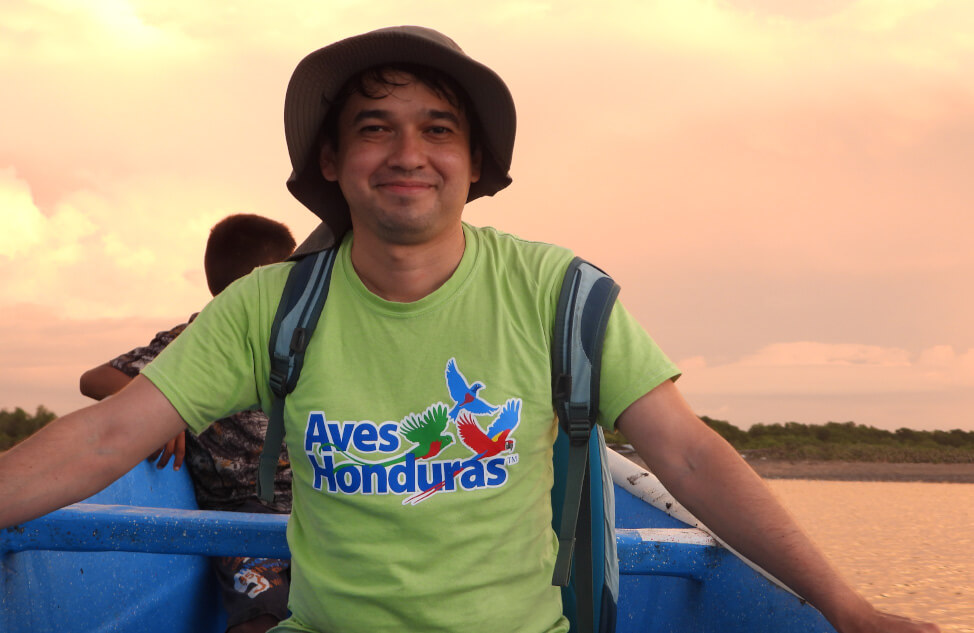
Left: A mixed flock of Western Sandpipers (Calidris mauri), Semipalmated Sandpiper (C. pusilla), Least Sandpiper (C. minutilla), and Wilson’s Plover (Charadrius wilsonia). Right: Coastal Solutions fellow, Onil Rodriquez. Photos: Salvadora Morales.
Since we didn’t know where this the large flock flew to, we divided into two groups to track it, one group went along the beach and the other group returned to the boat to travel to Playa Venado in the research center of the Olive Ridley Sea Turtle. It was here that we found the flock roosting on a small beach of Estero El Dorado.
These areas are part of the Punta Condega-Jicarito System, recently nominated by the Forest Conservation Institute (ICF for its Spanish name) to be part of the Western Hemisphere Shorebird Reserve Network as a Site of Regional Importance. The system is part of a suite of areas that offer shorebirds foraging sites generally located on mudflats and resting areas that include beaches, shrimp pans, and mangroves. This area provides the opportunity to work with shrimp farms, fishermen in coastal areas, and protected areas under the co-manager’s administration.
For Onil Rodríguez, this collaboration with Manomet is “a win-win” because it allows him to learn and gain experience from experts on shorebirds, and at the same time, the project contributes to the generation of information that was needed for the Gulf of Fonseca on the Honduran side. It has been a synergy that allows it to meet the objectives of Coastal Solutions and support the work of ICF.
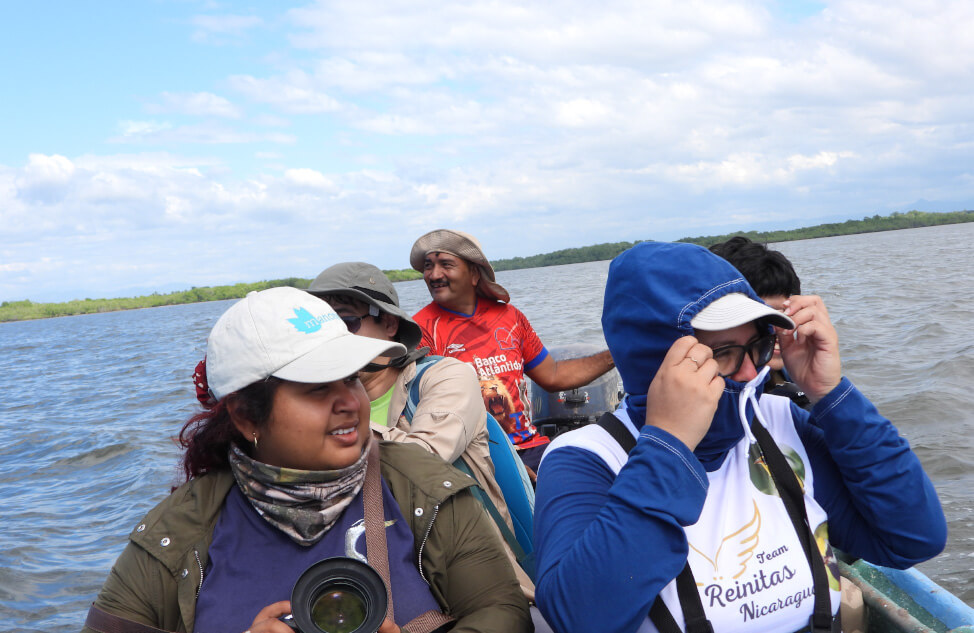
The team of biologists on the search for shorebirds. Photo: Salvadora Morales
Also during these first two surveys, part of the Quetzalli Nicaragua team accompanied the bird counts, sharing lessons learned and generated over the past six years at the Estero Real Delta WHSRN site in Nicaragua, which is part of the Gulf of Fonseca, making networking a reality through the exchange of experiences.
So far, with the support of the Asociación Nacional de Acuicultores de Hondruas (ANDAH) and other stakeholders, project collaborators have involved three shrimp companies, Grupo Granjas Marinas, Seajoy, ICASUR, and El Faro, where the first shorebird counts and documentation of best practices for shorebirds have been conducted. Counts have also been conducted in the Punta Condega, Jicarito, and Berbería habitat management areas by species. The counts will be extended in January-February and then in the migration season, generating important information on feeding and roosting sites for shorebirds.
These first two surveys confirmed the importance of the Punta Condega-Jicarito System and documented the needs of their roosting sites, including the need for beach clean-up campaigns, safeguarding roosting sites within the shrimp farms, and management of natural salt marshes to maintain safe sites for shorebirds.
Cover Photo: A mixed flock of Western Sandpipers, Semipalmated Sandpiper, Least Sandpiper, and Wilson’s Plover flies over the Gulf of Fonseca in Honduras. Photo: Salvadora Morales.





